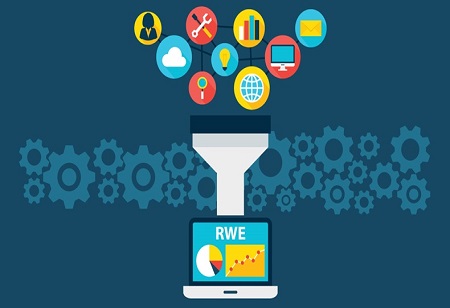Abhrasnata Das | Sunday, 04 September 2022

Real world evidence (RWE) in pharmaceutical drug development analyzes real world data, such as electronic health records and data from wearable devices, to complement clinical trials data. RWE provides insights that trials can’t, including safety and effectiveness details from a patient’s daily life. RWE helps researchers understand how patient characteristics and behaviors affect health outcomes, which helps to predict the progression of a disease and a patient’s response to a vaccine or therapy. As the use of RWE continues to expand, pharmaceutical industry professionals can see key use cases in the vaccine development process, the testing of medications, and the design of digital therapeutics. In this article, we have listed the top three benefits of Real world evidence in the pharmaceutical industry.
Increasing Adoption of RWD in Rare Diseases Rare disease research is an area that can benefit greatly from using RWD. Many rare diseases are not well studied, their natural history is unknown, and the outcomes that should be targeted are unclear. Traditional RCTs include treatment and control arms in which participants receive the current standard of care or placebo. Of course, in the case of rare and orphan disease populations, a sufficiently powered traditional RCT may be very difficult to carry out due to recruitment challenges and the potential absence of a current standard of care.
As a result, single-arm trials are increasingly being relied upon as pharmaceutical companies focus on small populations in therapeutic areas of extremely high unmet medical need. This phenomenon is not only limited to rare and orphan disease populations, such as Batten disease and Lennox-Gastaut Syndrome, but also includes smaller underserved segments of more common diseases, such as HER2-negative hormone-positive breast cancer or non-muscle invasive bladder cancer, where there is no current effective treatment available. Similar scenarios occur with some types of advanced cancers where the disease is both rare and life threatening, making it impractical and unethical to recruit a control population for a clinical trial.
In these instances where it is not possible to establish a control group, regulators and payers are increasingly accepting single-arm trials, but they prefer to see some comparative data as part of the marketing authorisation submission. With single-arm trials, RWD can be used to generate an external comparator arm; a practical approach that also saves time and lowers costs.
Creating an External Comparator Arm Regulators are often interested in the use of so-called natural history studies to offer pure external comparators, especially in circumstances where there are no approved treatments or accepted standards of care. However, the term natural history is really a misnomer because all patients receive at least some kind of intervention in the real world. Even in cases where there is no standard of care, doctors always try to alleviate patients’ symptoms with some type of treatment. Consider Batten disease, which refers to a group of rare, fatal, inherited nervous system disorders that affects about 50 children in the UK. These children have about 20 to 25 seizures a day and reduction in seizure frequency is the desired outcome
Although there is no approved treatment, doctors do prescribe different types of anti-epileptics. Therefore, there cannot be a true natural history study offering a pure non-treated comparison. In such cases, the control group would be an arm that provides information about the treatments used and outcomes for these patients, without the interventional drug in question. In addition to the use of natural history studies and historical controls, external control arms can leverage data synthesized from other clinical trials that are not part of the same protocol.
A synthetic arm is designed by selecting patients from placebo groups in past clinical trials, matching them to participants in the current trial, and then studying the outcomes. Techniques (such as matching techniques) are often used to adjust outcomes for valid comparisons similar to those used in classical realworld studies.
New Trends in the Use of RWD in Clinical Trials The development of COVID-19 vaccines and drugs provides some good examples of evolving RWD trends because they were created in response to a new disease where there was limited pre-existing clinical data that could be used for RCTs. Much of the COVID-19 disease knowledge and epidemiology was established using RWD and integrated into clinical trials.
RWD is also being employed with clinical data to support prescribing decisions for patients with COVID-19. For example, the World Health Organization (WHO) Solidarity Trial for COVID-19 treatments included RWD in its drug comparisons. It compared four types of existing antiviral or antiinflammatory drugs – remdesivir, hydroxychloroquine, lopinavir/ritonavir, and interferon beta – without a traditional control group. It was not a double-blind study, but a direct comparison study. The results were published by the WHO, and decisions were made by regulatory decision makers and policymakers about which drugs were useful for COVID-19 treatment and which were not recommended. The Solidarity Trial included local hospital standard-of-care procedures, which refer to real-world situations.
Is RWE the future? It is still early days for RWE as a source of vital pharma data, which means there are still disadvantages that must be dealt with. For instance, researchers cannot randomly assign patients to a particular therapy, or collect information on all characteristics of interest. In addition, there is currently little standardization across databases. For instance, databases designed to be sent to insurance companies for billing of private medical care are clean and consistent, making them easy to study. Nevertheless, they only provide the information needed by the insurance company, limiting the insight they offer.
On the other hand, electronic medical records (EMR)—made up of patient records from across different healthcare facilities—may be disorganized and incomplete. However, they offer incredibly rich insight into patient behavior and personal attributes that can impact their response to a therapy, such as pain scores or lung volume.